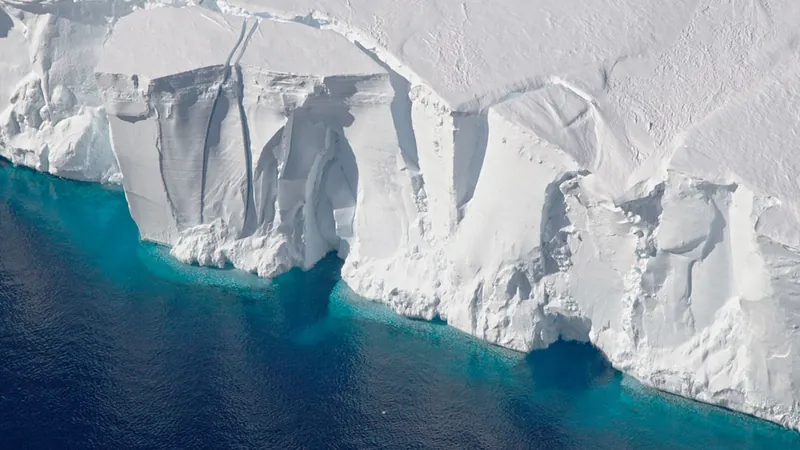
How Phytoplankton Are Acting as Protectors for Antarctica's Ice Shelves
2024-09-20
Author: Siti
Introduction
A recent study published in the Journal of Geophysical Research: Oceans reveals a fascinating relationship between phytoplankton and the ice shelves of Antarctica. In springtime, the seasonal melt of Antarctic sea ice creates open water zones known as polynyas, which serve as ideal habitats for these microscopic marine algae. When conditions are right, these tiny powerhouses can proliferate to the point where they paint the ocean's surface green.
Research Focus
The research, conducted by Twelves et al., focuses on how these vibrant microalgae influence heat transfer in the waters of the Amundsen Sea, located in West Antarctica. Utilizing advanced modeling techniques, specifically the MITgcm for fluid circulation alongside a biogeochemical model called Biology Light Iron Nutrient and Gas (BLING), the team explored how chlorophyll—the pigment responsible for photosynthesis—actively scatters sunlight and alters ocean temperatures.
Surprising Findings
Their findings were surprising: phytoplankton absorb heat within the upper layers of seawater, but this heat tends to escape back into the atmosphere as summer progresses. One of the most significant impacts highlighted in the study is that the shade provided by phytoplankton helps keep the deeper water cooler, consequently protecting the surrounding ice shelves from excessive heat exposure. The presence of these algae can slow down ice melt rates by approximately 7%, a critical factor as the planet grapples with the ramifications of climate change.
Complex Feedback Mechanism
However, the study also reveals a complex feedback mechanism at play. As ice continues to melt in the region, sediments rich in iron are released into the waters, enhancing the growth of phytoplankton. Iron is essential for these microorganisms, and it’s a double-edged sword: while they thrive on this nutrient, their very presence may also restrict further ice melting. This intriguing interaction underscores the delicate balance within the Antarctic ecosystem.
Implications of Climate Change
As climate change accelerates the loss of sea ice, an increasing amount of sunlight will penetrate the ocean's surface. This raises new questions about how phytoplankton and other particles in the water may influence climate dynamics. The authors emphasize the necessity of further research into these microbial communities, as they could play a pivotal role in the health of the Antarctic environment and its ice structures.
Conclusion
Stay tuned for more insights into how the smallest life forms on Earth might be the biggest champions in the fight against climate change!
 Brasil (PT)
Brasil (PT)
 Canada (EN)
Canada (EN)
 Chile (ES)
Chile (ES)
 España (ES)
España (ES)
 France (FR)
France (FR)
 Hong Kong (EN)
Hong Kong (EN)
 Italia (IT)
Italia (IT)
 日本 (JA)
日本 (JA)
 Magyarország (HU)
Magyarország (HU)
 Norge (NO)
Norge (NO)
 Polska (PL)
Polska (PL)
 Schweiz (DE)
Schweiz (DE)
 Singapore (EN)
Singapore (EN)
 Sverige (SV)
Sverige (SV)
 Suomi (FI)
Suomi (FI)
 Türkiye (TR)
Türkiye (TR)